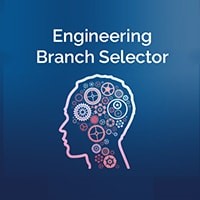Master of Science in Information Technology(MSCIT Full Form). The demand for people with skills & knowledge in the IT domain has increased due to the significant growth the field of information technology has experienced in recent years.
A specialist PG degree that explores the complexities of IT systems, networks, and applications is called MSCIT. Its goal is to give students the information, abilities, and know-how they need to successfully negotiate the complicated and constantly changing world of information technology.
MSCIT Full Form: Eligibility Criteria
The university or department offering the Master of Science in Information Technology (MSCIT) program may have different prerequisites for eligibility. But the majority of institutions have some standard prerequisites:
1. Educational Background:
- Diploma: A bachelor’s degree in information technology such as a B.Tech, BE, BCA, or a closely related field, is required. In addition to IT degrees, certain colleges may also accept degrees in other fields like Maths, Physics, or engineering.
- Minimum percentage: For a bachelor’s degree, the majority colleges has a minimum score of 50-60 percent. But, this can differ greatly based on how competitive the program and university are.
2. Entrance exams:
You could be required to give an entrance exam, such as The Graduate Record Examinations (GRE) or The Graduate Aptitude Test in Engineering (GATE) by some universities. These tests evaluate your ability and familiarity with pertinent IT topics.
3. Extra specifications:
- Experience at work: Some colleges may favour applicants having relevant IT work experience, albeit it’s not necessarily necessary.
- Letters of Recommendation (LOR): Instructors, employers, or other experts who can attest to your academic proficiency and program fit may be asked to provide LORs to certain universities.
MSCIT Full Form: Duration of the Course
The timeframe of a Master of Science in Information Technology (MSCIT Full Form) curriculum typically spans from 1 to 2 years for full-time enrollment. Nevertheless, the precise duration is subject to variation contingent upon several determinants, including:
- Institution/University: Various institutions/universities may adopt diverse program configurations and durations.
- Study Mode: Full-time programs are commonly finalized within 1-2 years, whereas part-time programs may extend over a more protracted period, frequently 3-4 years or beyond.
- Curricular Framework: Certain programs may propose accelerated alternatives or authorize students to undertake additional courses, facilitating either an expedited or decelerated completion of the program in comparison to the standard duration.
MSCIT Full Form: Specializations Offered
Many universities and institutes provide specialized tracks or modules within their Master of Science in Information Technology (Full Form MSCIT) programs, which typically offers a broad foundation in numerous IT fields. With these specializations, students can concentrate their study on certain areas of interest and gain more knowledge in the subjects they have selected.
The following typical specializations are available in Master of Science in Information Technology (Full Form MSCIT):
- Software Engineering
- Computer Networking and Security
- Cloud Computing and Big Data
- Artificial Intelligence and Machine Learning
- Data Science and Analytics
- Information Systems Management
- Cybersecurity
MSCIT Full Form: Career Opportunities
The Master of Science in Information Technology (MSCIT Full Form) program equips you with advanced knowledge and practical skills, opening doors to diverse and well-paying career paths in the ever-evolving IT industry. MSCIT course can offer you with following career opportunities:
- Software development: Build the future- Software Engineer, Applications Developer, System Developer, Mobile App Developer, Web Developer.
- Systems engineering: Keep the network running – design, manage, and secure systems.
- IT security: Become a digital guardian – Security Analyst, Network Security engineer, Information Security Specialist.
- Data analytics: Make sense of the data – analyze, interpret, and extract insights.
- And more: Explore options in database management, project management, and research.
MSCIT Full Form: Top Institutes Offering MSCIT
Master of Science in Information Technology (MSCIT Full Form) programs are offered by numerous institutions. These are the top ten research institutes:
Information Technology Institute of India (IIT) The Indian Institute of Science (IISc Bangalore), the National Institute of Technology (NIT), and the Indian Institute of Science Education and Sciences (IISER) ,BITS Pilani Birla Institute of Technology, and SICSR, the Symbiotic Informatics Research Institute Technology Institute of Vellore (VIT) Friendship University of Manipal Academy of Higher Education (MAHE).
Networking and Communication
Network Fundamentals: This includes a comprehensive understanding of the foundational ideas of networking, including the exceptional kinds of networks which include Local Area Networks (LAN), Wide Area Networks (WAN), and Metropolitan Area Networks (MAN). It also covers community topologies, which includes famous person, ring, and mesh, and the role of numerous community additives in establishing and preserving communication.
OSI and TCP/IP Models: A deep dive into the OSI (Open Systems Interconnection) version and the TCP/IP (Transmission Control Protocol/Internet Protocol) suite. This consists of reading the seven layers of the OSI version, their functions, and how they have interaction with every other. Similarly, the TCP/IP suite’s 4 layers are analyzed, focusing on their function in facilitating conversation across networks.
Network Devices and Hardware: Detailed examination of crucial community hardware which include routers, switches, hubs, and modems. This factor covers their unique functions, configurations, and how they make a contribution to the establishment and control of network connections. Understanding how each device operates and interacts with different components is critical for community layout and troubleshooting.
IP Addressing and Subnetting: In-intensity take a look at of IP addressing schemes, which includes IPv4 and IPv6. This section covers how IP addresses are based, assigned, and managed inside a community. Subnetting strategies are also explored to optimize IP address allocation and enhance community overall performance and security.
Network Protocols and Standards: Examination of diverse community protocols including HTTP (Hypertext Transfer Protocol), FTP (File Transfer Protocol), and DNS (Domain Name System). This point additionally includes information the function of requirements in making sure compatibility
MSCIT Full Form: Conclusion
The Master of Science in Information Technology (MSCIT Full Form) degree prepares students for a variety of fulfilling occupations in the rapidly changing field of technology by giving them a solid foundation and specialized abilities in a range of IT domains.
What you need know about MSCIT is as follows:
- It offers: Comprehensive understanding and hands-on training in a range of IT specialties, including data analytics, networking, software development, and security.
the chance to pursue specialized paths that address personal interests and professional objectives and allow deeper exploration of particular fields. - It provides access to a multitude of lucrative and sought-after employment options in a variety of fields, including as data analytics, IT security, systems engineering, software development, and more.
the opportunity to grow professionally and increase your knowledge through ongoing education.
MSCIT Full Form: FAQ
Q1: What is the difference between LAN, WAN, and MAN?
A: LAN (Local Area Network) covers a small geographic area, like a single building. WAN (Wide Area Network) spans large geographic areas, such as cities or countries. MAN (Metropolitan Area Network) covers a city or large campus, bridging the gap between LAN and WAN.
Q2: What is the OSI model and why is it important?
A: The OSI (Open Systems Interconnection) model is a theoretical framework that divides network communication into seven layers (Physical, Data Link, Network, Transport, Session, Presentation, and Application). It helps standardize network functions and troubleshooting by providing a clear structure for understanding how different network components interact.
Q3: How does the TCP/IP model differ from the OSI model?
A: The TCP/IP (Transmission Control Protocol/Internet Protocol) model consists of four layers (Network Interface, Internet, Transport, and Application) compared to the OSI model’s seven layers. The TCP/IP model is more focused on practical implementation and is used in real-world networking.
Q4: What are the key functions of network devices like routers and switches?
A: Routers direct data packets between different networks, often managing traffic between a local network and the internet. Switches connect devices within the same network, efficiently directing data to the appropriate destination within that network.
Q5: What are common network protocols and their functions?
A: Common network protocols include HTTP (for web traffic), FTP (for file transfers), DNS (for domain name resolution), and SMTP (for email transmission). Each protocol specifies rules for data exchange and communication between devices.



















